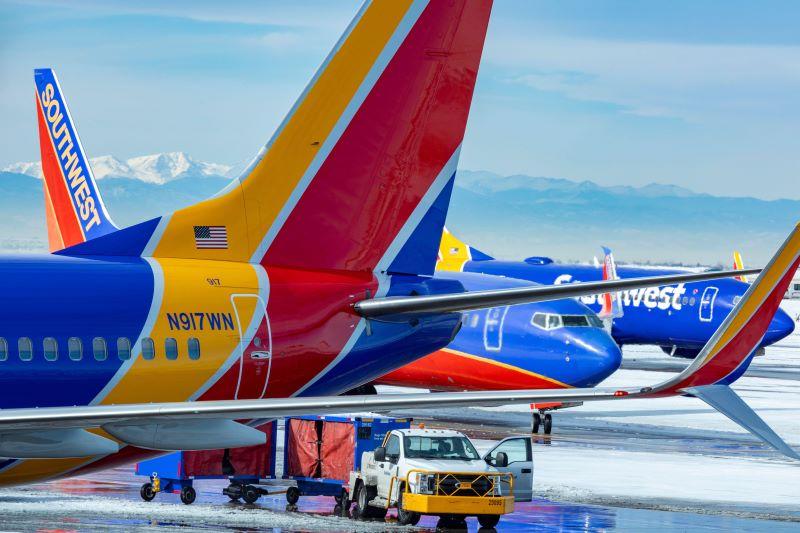Southwest Airlines Establishes Plan To Strengthen Winter Operations

Southwest Airlines is “well underway” with a remediation plan to prevent a winter event of the magnitude and impact of its December 2022 operational disruption, including through investments in technology, equipment, and cross-team collaboration.
The carrier continues to estimate a first quarter negative revenue impact of roughly $300-350 million related to the “bookaway” that followed its disruption, which came during the busy winter holiday travel period. With that impact largely isolated to January and February, CEO Bob Jordan called March revenue trends “encouraging” alongside several upward-trending engagement metrics he said were remaining steady. Among its customers who were impacted by the December disruption, the airline has seen volumes of bookings for future travel grow week by week.
“It is really encouraging that folks that are part of our disruption in December are very willing to fly Southwest again so soon,” Jordan said, speaking to investors March 14.
Initial assessments on the December disruption conducted by Southwest and third-party consultancy Oliver Wyman are “largely complete,” Jordan said, and identify the root cause in two parts. In the first, the carrier pointed to the severity of “Winter Storm Elliot” with conditions it described as being more sudden and severe than predicted, with a greater-than-expected impact on station operations. In the second, Southwest said “outsized impacts” at two of its largest airports—Denver and Chicago Midway—created “waves and waves” of close-in flight cancellations, with multiple-day airport shutdowns.
“The cascading, close-in flight cancellations overwhelmed our processes and technology which led to manual alternatives and efforts that were both tedious and took longer to solve,” Jordan said. “This was the point where the weather-related event turned into a crew-related event for us, and eventually resulted in a three-day reset of our aircraft and crew networks.”
Moving forward, the company’s action plan—which Jordan said complements its existing multi-year operations modernization plan—is separated into three parts: improve winter operations through airport infrastructure, equipment, and preparedness; enhance cross-team collaboration to improve processes, decision making, escalation procedures, and communication during irregular operations; and accelerate investments in technology and tools that will allow for greater volume and pace during irregular operations. This will include purchasing deicing trucks, deicing pads, engine covers and engine heaters, and securing additional deicing fluid capacity at key network locations. The carrier said it has already upgraded its crew optimization software and plans to enhance its electronic crew notification system and crew phone system along with upgrades to its customer support and services phone system for surges. The airline will also augment winter staffing in certain locations and implement a new weather application to enhance deicing holdover times.
“Our existing weather application requires more subjective judgment and, in the case of our Denver operation, produced inferior holdover times for our aircraft, effectively stopping departures for a significant amount of time—in a couple of cases, for days,” Jordan said.
Southwest’s CEO expressed confidence in the assessment’s findings and tactical plans moving forward. Speaking at the JP Morgan Industrials conference, Jordan said, “Are there structural changes needed to the Southwest business model or route network, based on what happened in December? We believe the answer is no.”
The carrier is targeting October 2023 to finalize execution of its remediation plan.
Southwest said it also remains focused on restoring its route network by the end of 2023 for additional operational resiliency with more depth and frequency across the network. On its fleet, the carrier noted it still anticipates bringing Boeing 737-7s on as planned, when certified. Company executives said having a “healthy mix” of 737-7s—the smallest variant in the 737 MAX family—will serve its business model well, meeting the needs of its short- to medium-haul market.
Southwest expects to receive roughly 90 aircraft deliveries in 2023, compared to its previous expectation of 100, putting the airline’s fleet at 833 aircraft at year-end, net of 27 planned retirements.
